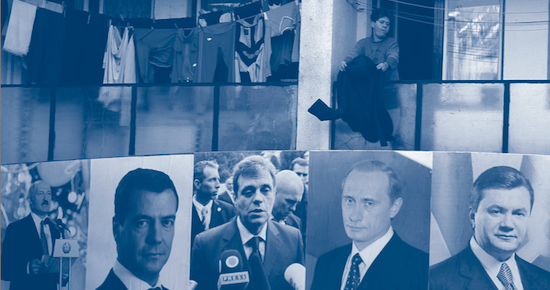It is a sad fact that Estonia and Russia have never had friendly or good-neighbourly relations. Perhaps in the first months of the post-socialist period, Estonian-Russian relations could be classified as normal or better. The Russian S.F.S.R of that period was one of the first states after Iceland to recognize Estonia’s re-independence after the hardliner putsch fell through in Moscow. On 24 October 1991, the Republic of Estonia and the Russian S.F.S.R. established diplomatic relations. On 26 December 1991, the Russian S.F.S.R.’s Supreme Soviet ratified the treaty on bilateral relations between the two countries.
It appeared that only the only thing that stood in the way of friendly relations was the fact that Soviet army units remained on Estonian soil. Yet even in this area, there was a positive outlook, as on 31 December 1991, the day the Soviet Union ceased to exist, the Russian Federation declared itself the legal successor of the colossus. Estonia now awaited Russia’s preparedness for negotiations for the withdrawal of Soviet army units left on its territory. On 14 January 1992, Russian Foreign Minister Andrei Kozyrev visited Tallinn to address these matters. Yet, contrary to Estonia’s positive expectations, the foreign minister announced that the units did not belong to Russia but to the Commonwealth of Independent States, and as a result, Russia could not do anything on its own. Estonia proceeded to remind Russia of its self-declared legal successorship to the USSR, whose units were situated on Estonian soil, and this resulted in Russian President Boris Yeltsin telling Estonia on 17 January 1992 that Russia would nevertheless attempt to deal with the problem of troop withdrawal from Estonia. Understandably, Estonia wanted to get on with the process, but Russia started stalling and using pretexts. /... /

Posters depicting from left, Belarusian President Alexander Lukashenko, Russian President Dmitry Medvedev, former Serbian Prime Minister Vojislav Kostunica, Russian Prime Minister Vladimir Putin and Ukraine s President Victor Yanukovych, are seen under a balcony on the building in the northern Serb-dominated part of Kosovska Mitrovica, Kosovo, Tuesday, Oct. 18, 2011. Photo: Scanpix
Citing supposed discrimination against the Soviet-era Russian-speaking settlers and its 1993 military doctrine, in which the Baltics were consigned to the “near abroad” due to security interests, Kozyrev said at a major foreign policy summit at Moscow that Russia had no need in the near future to quit regions that had been its influence for centuries. If necessary, he said, a balance had to be found between troop withdrawals and military presence. Such an opinion regarding withdrawal of Russian troops from the Baltics naturally did not satisfy Western countries. The US signalled to the Kremlin that availability of credit allocated by Congress on favourable terms and other economic aid depended directly on how rapidly and orderly Russia withdrew its troops from the Baltics. US President Bill Clinton also called on Yeltsin to arrange for a prompt meeting with Estonian head of state Lennart Meri to put in place the timetable for the withdrawal from Estonia. This kind of pressure on the Kremlin quickly bore fruit. On 26 July 1994, at a meeting between Meri and Yeltsin, an agreement was duly signed on withdrawal of Russian troops and social guarantees for Russian army pensioners. On 30 July 1994, Estonian diplomat Raul Mälk and Russian deputy foreign minister Igor Ivanov initialled an agreement on decommissioning the Paldiski naval base nuclear reactor and withdrawing equipment and personnel by 30 September 1995. /... /
On 24 June 2002, Putin made a surprising announcement at a Moscow press conference, saying it would be “a tactical and strategic error to block Estonia’s accession to NATO”. After the September 11 attacks, the US and Russia became engaged in a joint battle against international terrorism, which left Russia with free rein for military operations in Chechnya and gave it a seat on a NATO-Russia council. In turn, the US had the freedom to “push through” Baltic membership of NATO. Also strange was also the fact that the statement by Putin referred to above was not a signal to Estonia that it was time to renounce the positive engagement policy toward Russia as a complete failure of the Russia-oriented foreign policy. One of the main goals of that policy had already been achieved by the US and its allies in the West – the possibility to join NATO, which opened doors to EU membership. It was likewise clear to Putin and his inner court that “near abroad” type approach to Estonia would no longer work or be effective. The Estonian foreign ministry should have understood that Russia had only three serious ways of influencing Estonia: the Russian-speaking population and their attitudes toward the Estonian government, Estonian-Russian trade and transit from Russia. In light of these factors, Russia foreign policy should have been overhauled in 2003. Unfortunately this was not done. It was not deemed necessary to take into account Russia’s information security doctrine from 2000, which the Estonian Security Police yearbook 2003 titled a “communicational destabilizing influence in the near abroad” to say nothing of the project committee memorandum authored by leading Kremlin ideologists Kolerov and Pavlovsky, which was published on the Kremlin’s internet portal regnum.ru on 17 March 2003. In the latter document, the Russian government was urged to take quick action to take strategic control of the Baltic seaboard, to guarantee independence from Baltic states’ transit ports and full support for the Russian diaspora.
On 24 June 2002, Putin made a surprising announcement at a Moscow press conference, saying it would be “a tactical and strategic error to block Estonia’s accession to NATO”. After the September 11 attacks, the US and Russia became engaged in a joint battle against international terrorism, which left Russia with free rein for military operations in Chechnya and gave it a seat on a NATO-Russia council. In turn, the US had the freedom to “push through” Baltic membership of NATO. Also strange was also the fact that the statement by Putin referred to above was not a signal to Estonia that it was time to renounce the positive engagement policy toward Russia as a complete failure of the Russia-oriented foreign policy. One of the main goals of that policy had already been achieved by the US and its allies in the West – the possibility to join NATO, which opened doors to EU membership. It was likewise clear to Putin and his inner court that “near abroad” type approach to Estonia would no longer work or be effective. The Estonian foreign ministry should have understood that Russia had only three serious ways of influencing Estonia: the Russian-speaking population and their attitudes toward the Estonian government, Estonian-Russian trade and transit from Russia. In light of these factors, Russia foreign policy should have been overhauled in 2003. Unfortunately this was not done. It was not deemed necessary to take into account Russia’s information security doctrine from 2000, which the Estonian Security Police yearbook 2003 titled a “communicational destabilizing influence in the near abroad” to say nothing of the project committee memorandum authored by leading Kremlin ideologists Kolerov and Pavlovsky, which was published on the Kremlin’s internet portal regnum.ru on 17 March 2003. In the latter document, the Russian government was urged to take quick action to take strategic control of the Baltic seaboard, to guarantee independence from Baltic states’ transit ports and full support for the Russian diaspora.
In 2009, when Medvedev started emerging from Putin’s shadow with his own decisions, word came from circles close to the Kremlin that the Russian government would now start taking a policy of informational and economic engagement toward Estonia. There were some hints of this in 2010, when the Russian Foreign Ministry unveiled a draft foreign policy strategy that some Estonian media sources erroneously called Russia’s foreign trade doctrine. This document stated that Russia had to make skilful use of the possibilities afforded by Estonian transit ports to accelerate transit on European Union-oriented routes. Russian business people also were called on to gain holdings in or control over Estonia’s strategic or high-tech companies. The Kremlin had a serious economic takeover bid, which was cut short by the global financial and economic crisis.
Today the strange and allegedly monolithic tandem of Putin–Medvedev is crumbling. Nor is it clear what could befall the dollar and the Eurozone before the year is out. Yet all these factors have a palpable impact on Estonian-Russian relations. Thus the waiting game played by Estonian foreign policy planners regarding corrections on the Russia front is justified. It is only to be hoped that key institutions of power in Russia that will face upcoming elections (State Duma and the president) will retain the desire to develop normal relations with the West and mutually beneficial cooperation. This would also allow Estonia to develop a Russia foreign policy that would foster normal relations between the two neighbours.
Today the strange and allegedly monolithic tandem of Putin–Medvedev is crumbling. Nor is it clear what could befall the dollar and the Eurozone before the year is out. Yet all these factors have a palpable impact on Estonian-Russian relations. Thus the waiting game played by Estonian foreign policy planners regarding corrections on the Russia front is justified. It is only to be hoped that key institutions of power in Russia that will face upcoming elections (State Duma and the president) will retain the desire to develop normal relations with the West and mutually beneficial cooperation. This would also allow Estonia to develop a Russia foreign policy that would foster normal relations between the two neighbours.

Juhan Värk






